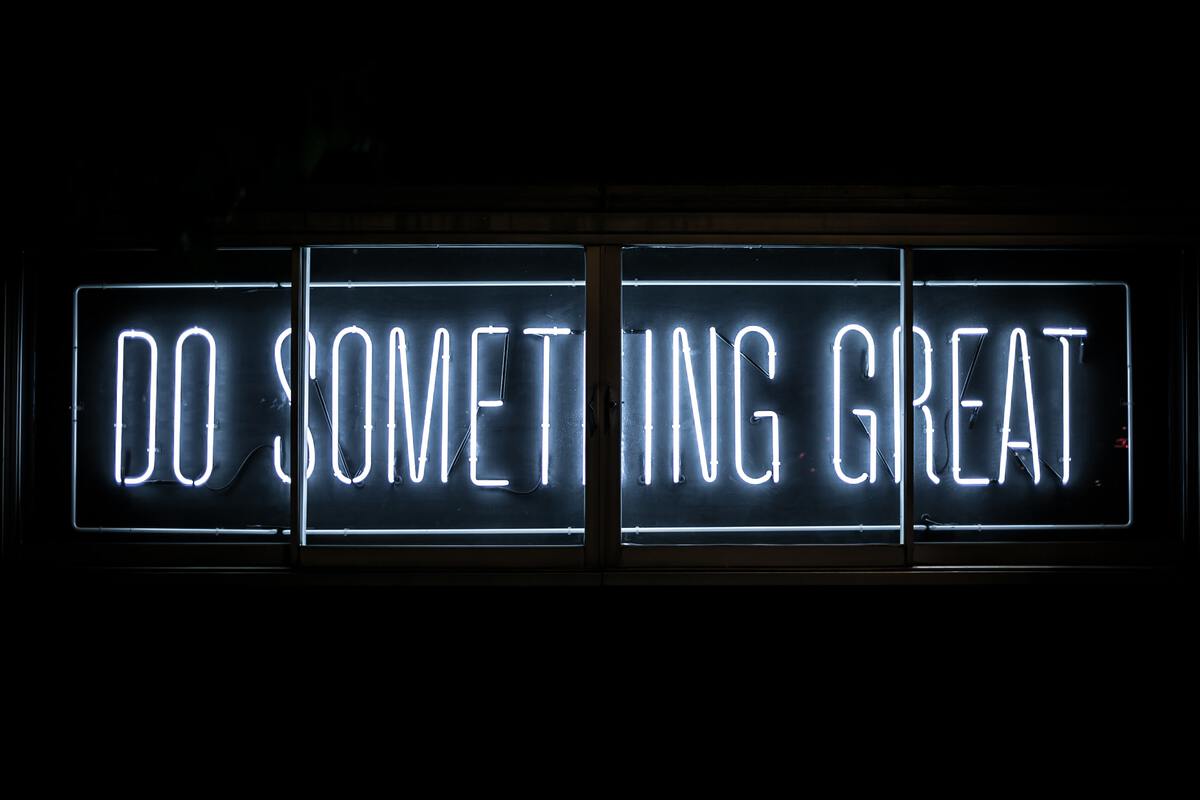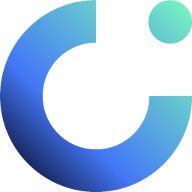My name is Erik Mansur. I'm VP of Product Marketing at Crayon and the host of Into the Fray, the Product Marketing Alliance’s podcast dedicated to all things competitive intelligence.
Now, I don't know about you, but I can't seem to do anything without feedback. That's not to say I'm besieged by impostor syndrome, or I'm wracked with insecurity—I'm not. Or at least, I don't think I am. The point I'm getting at is all good collaborative processes are built upon values of transparency and cross-functionality, and a competitive intelligence program is no different.
My guest today is Aaron Stillman. He's the VP of Product Marketing and Education at AB Tasty. Aaron cut his teeth in the competitive intelligence discipline back when he was the Director of Product Marketing at Healthx, and now he's running the whole show at AB Tasty, a maker of software that optimizes the customer experience.
Today's talking points:
- How to ask for stakeholder feedback.
- Making connections across your org.
- Separating signal from noise in CI data.
- Building a remarkable CI program.
How to ask for stakeholder feedback on your CI findings
🗣️ Erik Mansur
A CI program cannot be created in a vacuum, and Aaron has four-plus years of experience making sure everyone's on board by letting their true feelings be known about the process he's building.
Every feedback loop begins with an inciting incident, which is often a discussion with a key stakeholder. But how does that discussion even start? What is the first thing that Aaron says to his counterpart across the table? Just how does he bring up the notion of competitive intelligence?

👨💼 Aaron Stillman
One of the best approaches I've taken is to be humble. When I start the conversation, I say, “Listen, everything is changing rapidly and regularly, and I'm not always going to have the most up-to-date, accurate information. The only way I can succeed in helping you succeed, is if you look at what I'm doing, and say, ‘That's not true! That's wrong! I heard about something different that works.’”
I think that breaks down any defense mechanisms and gives a clear signal I'm not successful if they're not successful, I'm not going to take offense to what they tell me. I want my stakeholders to give me critical feedback. They’re on the front lines, and I rely on them as subject-matter experts.
Over the years, I’ve just gotten used to having to prove that taking the time to do this will deliver results, and it’s grown from there.
~ Aaron Stillman
One of the things I love about competitive intelligence is it has the potential to be so broad. At AB Tasty, I made a conscious decision to call it market intelligence instead of competitive intelligence. I want it to be understood that what we do is broader than just looking at companies who are competing with us on certain features.
That gave me an opportunity to look at how we can help our talent acquisition team within the HR department when it comes to competitors that are hiring with certain perks. I can help out with acquisitions too and show whether they make sense. It opens doors to departments other than just sales. While a huge part of my work is helping sales win deals, that’s just one piece of the pie.
Making connections across the organization
I won't ask any questions. I'll go and work on something, show up with it, and say, “I don't know if this helps you or not, but I did this for you. What do you think? Let's talk about what I could do differently.”
~ Aaron Stillman
🗣️ Erik Mansur
It's interesting you brought up HR and acquisitions. You’re helping to bring in the best talent and partner with the right other companies in order to be more successful. That seems like a broader approach that requires you to get in touch with the right people. How did you find the right people within the organization to have those conversations with? Did you go to your boss, check out the org chart, or just shoot emails around?
👨💼 Aaron Stillman
Part of it is that by nature, I'm very much looking to engage and talk with folks, even if we're not working together on something, so I just get to know everybody. Then, in parallel, I hear either directly or indirectly about pain points, initiatives, and things that groups are working on. From there, I'll look to whoever's in a position of power, and that's not always the manager or the VP; it’s whoever's got boots on the ground trying to execute.
My next step is to deliver value. I won't ask any questions. I'll go and work on something, show up with it, and say, “I don't know if this helps you or not, but I did this for you. What do you think? Let's talk about what I could do differently.”
I actually used Crayon as a tool for this very purpose with our talent acquisition team to build out a board with searches specific to talent. I came to our talent acquisition lead like, “Here's a board with a bunch of data we've collected for you.” That opened up the conversation, and we've been tweaking it ever since.
🗣️ Erik Mansur
Some collaborators almost need validation their feedback is being heard, right? They want to know what it is they've told you is being taken into account. It seems to me you're proactively coming to them with that proof. In your example, you've gone to an HR person having already put something together and asked what they would change about it, then you've made the changes and gone back to them, and that's how you’ve continued the conversation.
👨💼 Aaron Stillman
100%. I think part of that is muscle memory built up over time by working with sales, where it’s like, “What's in it for me? Why should I fill out Salesforce?” Over the years, I’ve just gotten used to having to prove that taking the time to do this will deliver results, and it’s grown from there.

Even more value this way 👇
We want to offer you even more value.
Network, knowledge share, or land your next role in competitive intelligence. Just click below to sign up to our competitive intelligence community on Slack.

Making collaboration effortless
I'm all about teaching people to fish and letting the data speak for itself.
~ Aaron Stillman
🗣️ Erik Mansur
Is that sort of instant validation your preferred way to stay in the game, or are there some people that bristle at that? Do you have to modulate your interactions a bit depending on who you're interacting with?
👨💼 Aaron Stillman
Yeah, 100%, and what I love about working for a global organization is the cultural human element of engaging someone in the US versus engaging someone in France or in Germany.
You can look at countries like Germany, the UK, and the US that are very “law and order;” those are the kinds of places where people are happy to queue. Then you look at Italy and France, and they're a little more loosey-goosey. My French mother-in-law laughed when she saw a line of people waiting for the bus!
🗣️ Erik Mansur
We’re going to get so many emails about this conversation, I can't even tell you, but you're making a great point about how certain countries are like, “We don't need such strict process; we’ll get to our eventual destination without lining up where the door is going to be when the bus arrives,” right?
👨💼 Aaron Stillman
100%. And there's this element of feeding someone versus teaching them to fish. I'm all about teaching people to fish and letting the data speak for itself.
If someone doesn't want to engage, that's their decision, but I also try to make it as easy as possible to collaborate. If someone wants to send me field intel in a Slack message, a call, or smoke signals, that’s great. Every possible option is open; we’ll handle it on the back end. Also, for people who don't want too much process, they can just forward an email, and they’re done. They don't have to do anything else.
🗣️ Erik Mansur
Do those people who keep it loosey-goosey know what kind of outcomes they can achieve from competitive intelligence? How many of those initial conversations come with a teaching moment about what CI can help them to achieve?
👨💼 Aaron Stillman
To pull people into collaboration, we have to show our program’s output, so we've established a quarterly win-loss analysis based on our competitors. We're bringing visibility to the utilization of our CI assets, and how that's tied to win-loss. People can draw their own conclusions, but it just so happens that certain folks who leverage certain assets seem to do a little better than others.
That's where – without having to point fingers or call any names out and just letting the data speak for itself – people start to think that maybe they should check our CI assets out.
Send out periodic 'newsletter' style updates to keep the less engaged abreast of new developments.
On top of that, at my company, we're big into Slack. There are actually way more Slack channels than I'd like to admit. There’s an info competitor Slack channel that's always quite animated by people either delivering info or asking questions, plus us pushing lots of updates and information and trying to group it all together.
One of the pieces of feedback we got on that Slack channel was that there are a lot of updates, but people didn’t always know when those updates are happening and when they should go and look. It would have been easy for me to just bullishly say that they should look all the time, before every opportunity and every deal, but they just don’t have time for that. And they don’t want to hear it, so that wouldn’t help anyone meet their objectives.
What we did instead was to continue making all these updates in real time, but aggregate them. Now we put out a regular announcement about all the different updates that happened. We’re also letting the data drive our next steps for how we collaborate with different regions and all that good stuff.
Separating the signals from the noise in CI data and feedback
If you looked at the number of opportunities, we were competing against them all the time, but when you looked at the revenue associated with those opportunities, it became clear there was no point spending any time on them.
~ Aaron Stillman
🗣️ Erik Mansur
What has been the most valuable feedback you've received about your CI program? Is there anything that has inspired you to take a left when you were originally going to take a right?
👨💼 Aaron Stillman
There was a moment in my career when I got pushed by a mentor deeper into a data-driven approach. Based on conversations with customers, prospects, and sales reps, I felt like I knew what I was doing; plus, I had tons of data, and I had done some CRM reporting and other surface-level kinds of things, but he really pushed me, and I took a deep dive at that point.
That changed everything for me. I realized at that moment a couple of competitors I thought were tier one were only superficial threats. The difference was in looking at revenue versus looking at the number of opportunities. If you looked at the number of opportunities, we were competing against them all the time, but when you looked at the revenue associated with those opportunities, it became clear there was no point spending any time on them.
That was a moment where I pivoted and realized what was just noise and what was worth focusing on. This happened years ago, and it impacted me for the rest of my career. That moment was such an eye-opener, and it was all because of collaboration and constructive feedback.
🗣️ Erik Mansur
How do you separate signal from noise with feedback? You're going to have outliers and naysayers that are never satisfied, so how do you make your feedback inclusive while eliminating distractions and criticism for criticism's sake?
👨💼 Aaron Stillman
It's not easy. We're all just human, so when you're putting your blood, sweat, and tears into something every day, and then some criticism comes in, you have a natural reaction to that. It takes a level of like experience and maturity and perhaps a certain personality type to deal with that.
When I hear these things and I can feel my heart starting to beat and feel myself starting to react a certain way, I put that to the side. I'll just think about what's being said to me and whether it has any relevance to the company’s vision, strategy, or goals. If the answer is yes, I'll dig a bit more. If the answer is no, it's noise and I move on.

Building a remarkable CI program
I want us to do such good work and engage everyone and deliver so much value that people are buzzing...
~ Aaron Stillman
🗣️ Erik Mansur
Let's say you go to 10 people for feedback – how many of them would say that they’re totally connected to what your program is doing?
👨💼 Aaron Stillman
I’d say 80% feel connected. They're proactively reaching out, giving field intelligence, and engaging with the assets. Now, getting everything? 0%. I don't think I've ever had a salesperson say, “I’m good. I don't need anything else from you. I’ve got 100% of what I need,” so I don't ever feel like the job is done.
🗣️ Erik Mansur
80% is a great benchmark. Like you said, not everybody will always have everything they require, and there's no such thing as a perfect CI program, but at the very least they know what's going on, and they feel they're part of the process. Are you optimizing for the 20%, or are you comfortable having a few naysayers who’ll come on board eventually?
👨💼 Aaron Stillman
We're optimizing, and we're finding innovative ways of doing it. For example, we use Gong. I love Gong as a tool within the CI program – it's not just for sales. We take snippets from Gong and put them into our CI assets so people don't have to take my word for everything. If they don't think this objection handling is good, they can hear it in action.
I wish I could credit the person who said this, but I can’t remember who it was. Somebody said the mantra for their department was “be remarkable.’ It wasn't “be great” or “be awesome.” It was “be remarkable” because they wanted others to remark about the group. It resonated, and I've picked that up and that's what I want.
I want us to do such good work and engage everyone and deliver so much value that people are buzzing like, “Did you check out that battle card? Did you see what Margaret did?” or “We won the deal! Thanks, sales, marketing, pre-sales, and competitive intelligence!” I want those remarks out there and for people to be talking about us.
Got insights?
Reckon you've got what it takes to be a podcast guest, article contributor, or guest speaker at one of our prestigious events?
We'd love to hear from you. 💙
Click the button below, tell us how much or how little you'd like to be involved, and just like that you've opened the door to a ton of new and exciting opportunities.





.png?v=4917c1c27c)